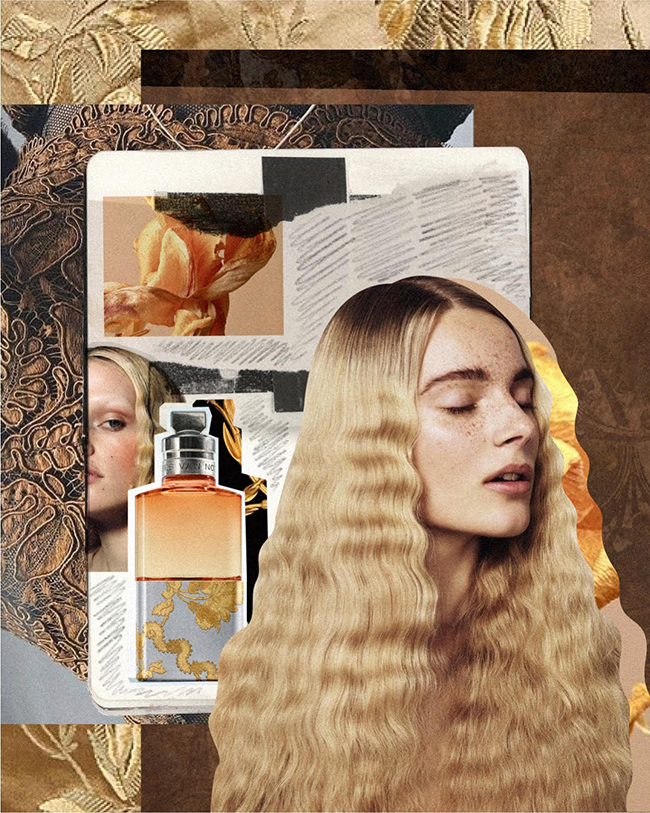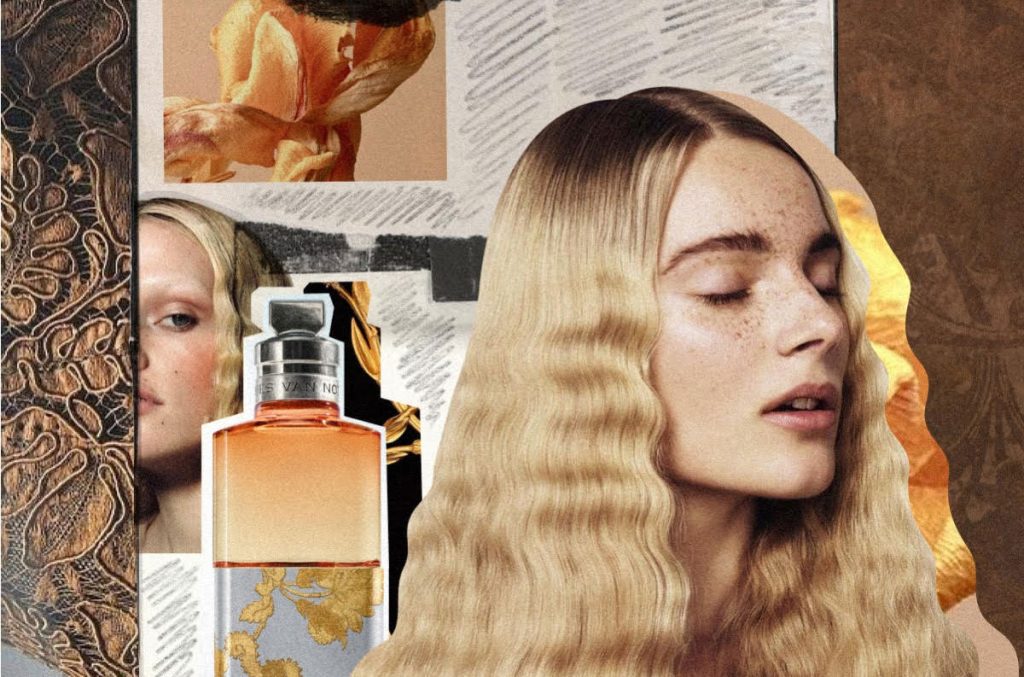Anastasia Dunaeva is an award-winning graphic designer and collage artist whose work blends mixed media, hand-drawn details, and editorial precision. Her practice revolves around fragments — a face, a fabric, a flower — reimagined into surreal yet elegant compositions. Described as magical, refined, and emotionally charged, her style carries the influence of her background in fashion and branding. Dunaeva’s art invites viewers to slow down, look closer, and discover beauty in unexpected connections.

A Conversation in Fragments
One of Dunaeva’s recent collages is described as a quiet conversation between textures, beauty, and memory. Collage, for her, is never just about cutting and pasting. It is the weaving together of fragments that carry their own histories — a portrait frozen in an intimate gaze, a flower at the height of bloom, or a fold of fabric pulled from fashion’s archive. When placed together, these fragments create layered stories that feel both surreal and intimate.
The result is less about spectacle and more about atmosphere. A face leans against petals. A scrap of silk rests against skin. A button anchors a composition as though it belonged there all along. The familiar becomes uncanny, and the ordinary is given new weight.
Memory and Surreal Intimacy
Memory plays a central role in her practice. Many of the fragments come from familiar places — vintage prints, fashion spreads, or sketches transformed into new forms. Others appear as strangers, reshaped until they find a home in the work. Collage becomes the meeting ground for memory and imagination, a space where recognition shifts into dream.
The surreal quality of her art is not about shock or distortion, but about proximity. By placing fragments together in unexpected ways, they begin to speak differently. A flower becomes an emotion. A portrait dissolves into a dreamscape. The intimacy lies not in what is shown, but in how it feels — a moment where the ordinary turns magical.
The Poetics of Ordinary Things
Dunaeva’s collages are rooted in ordinary objects and visuals, yet they emerge transformed. A fabric scrap becomes a landscape. A torn magazine clipping turns symbolic. The act of arranging is simple, but the outcome is poetic.
She allows imperfections to remain visible. Rough edges, uneven layers, traces of past lives — all of these contribute texture and depth. Rather than erase history, the work lets it linger, inviting viewers to sense the life of the materials even if they cannot name it.
Fashion as Foundation
Her background in fashion and branding is woven into the practice. Fashion taught her that textures can define mood, that color combinations can shift meaning. In collage, these lessons remain. A flower may read like a fabric pattern, a portrait like a silhouette in design.
Editorial discipline also plays a role. Branding requires precision, and Dunaeva applies that same care in composition. Each element is placed with intention. Balance matters, even when the imagery feels dreamlike. The work carries both surreal play and editorial sharpness.
An Invitation to Look Closer
The collages ask for attention and patience. They are layered works, not meant to be consumed in a glance. Each piece is built to reveal itself slowly, rewarding those who take time to study the fragments and their relationships.
This particular collage, with its interplay of portraits, flowers, and fashion details, asks for quiet. The textures create a rhythm. The fragments lean into each other with restraint, forming a work that is less about display and more about listening — listening to memory, to beauty, to the poetry of small connections.
Closing Thoughts
Anastasia Dunaeva’s collage practice is about transformation. Fragments are not discarded pieces but starting points for new stories. Beauty is found in seams, in overlaps, in the unexpected dialogue between images.
Her work proves that art does not always require grand gestures. Sometimes the most moving experiences come from fragments reassembled into something delicate, surreal, and intimate. In these collages, the ordinary becomes extraordinary, and the smallest details remind us that magic often hides in plain sight.

